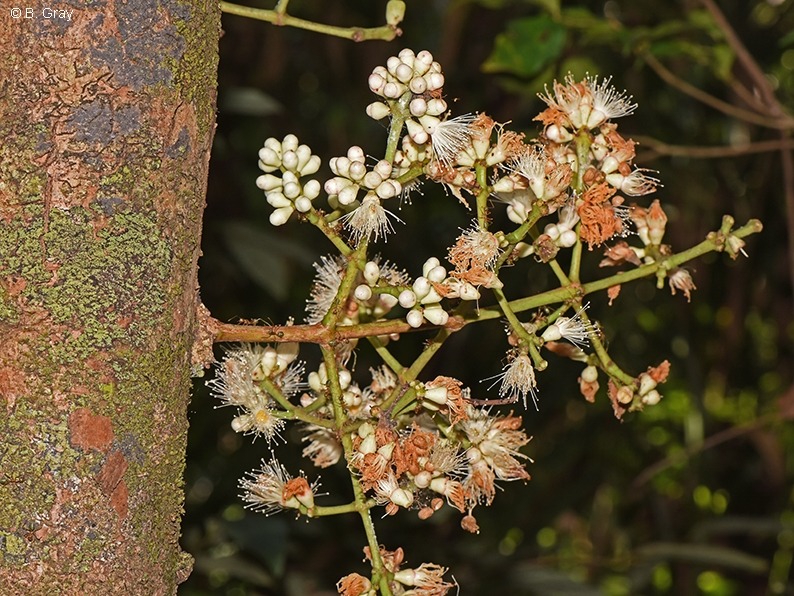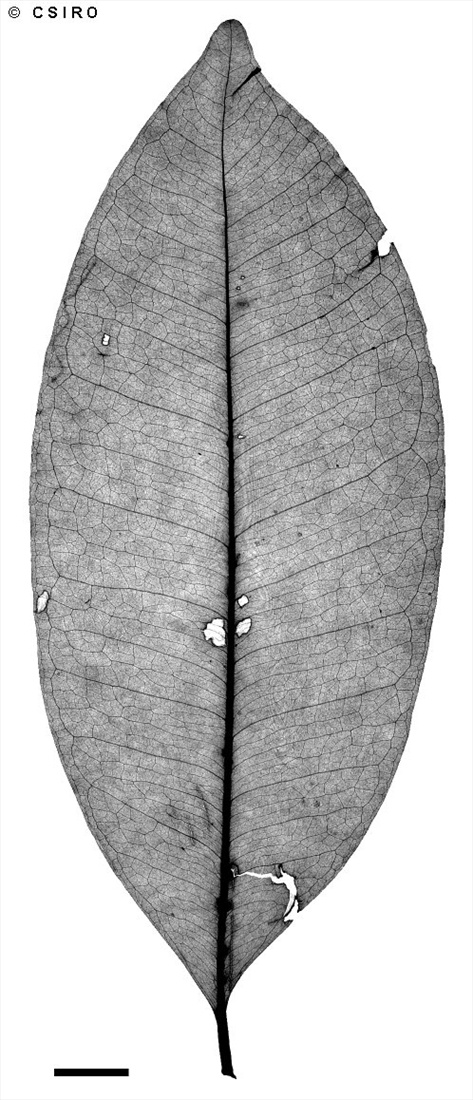Australian Tropical Rainforest Plants - Online edition
Syzygium branderhorstii Lauterb.








Lauterbach, C.A.G. (1910) Nova Guinea (Botanique) 8: 322. Type: West Irian, Okaba, Branderhorst 129; iso: BO.
Lockerbie Satinash; Satinash, Lockerbie
Generally a small tree but can occasionally grow to 50 cm dbh. Stem normally with bumps on the trunk where the inflorescences arise.
Leaf blades about 7-14 x 3-6.5 cm, petioles about 0.4-1.1 cm long. Midrib grooved on the upper surface at least towards the base. Lateral veins about 15-24 on each side of the midrib.
Bracts generally absent at anthesis. Calyx tube (hypanthium) gradually tapering into a rather stout pedicel, calyx tube (hypanthium) + pedicel about 6-10 mm long, calyx tube (hypanthium) about 4-6 mm diam., calyx lobes short, rounded, uniform, about 0.5-1 mm long. Petals orbicular, about 5-7 mm diam., oil dots conspicuous, more than 100 per petal, fairly uniformly distributed over the outer surface. Outer staminal filaments about 8-12 mm long, anthers about 1 x 0.5 mm, gland inconspicuous. Ovules about 13 or 14 per locule, placentas axile, central, ovules radiating, ascending. Style about 5-8 mm long, substantially shorter than the stamens.
Fruits variable in shape, about 30-50 x 20-40 mm, calyx lobes persistent, difficult to measure precisely, pericarp succulent. Seed solitary, about 17-25 x 12-15 mm, testa adhering slightly to the pericarp, but adhering quite strongly to the uniformly textured cotyledons. Radicle basal, cotyledonary stipules present.
This species has no commercial value and little is known about it wood qualities.
Wood specific gravity 0.87. The fruit is edible. Hyland (1983).





